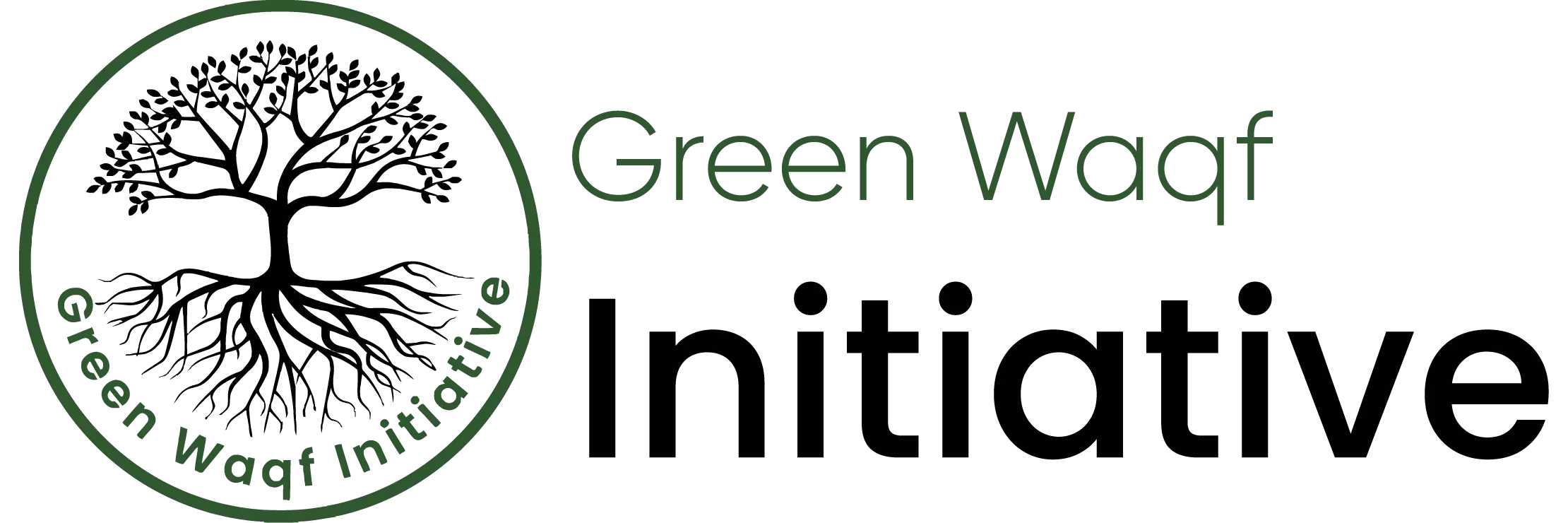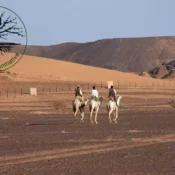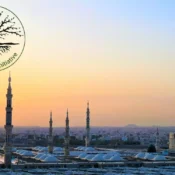
Egypt Envrionmental Profile
These environmental profiles were produced as part of the Green Waqf Initiative by
the Islamic Chamber of Commerce, Industry and Agriculture (ICCIA). ICCIA believes
that the Islamic concept of Waqf can be used as a social financing mechanism to
combat climate change. Through Waqf, the land is decommodified; therefore, it can be
used only for specific purposes defined by the owner. These purposes can include
reforestation, land revitalization and research centers, among others.
This environmental profile has been developed to assess the ecological situation in
Egypt and is part of a series that covers all ICCIA member countries. These profiles
are meant to be used as a source to assist in policy dialogue, stakeholder engagement,
and strategic planning and to help educate and raise awareness about the social,
cultural and economic risks associated with climate change. The profiles provide
relevant information on pertinent public and private sector policies and programmes
and the country's adaptation priorities and potentials.
Egypt Environment Profile Team
Author: Fatima Faisal
Editor: Safia Hussain
Table of Contents
- Introduction
- About ICCIA
- About the enviornmental profile
- Section 1: Country Overview
- General overview of Egypt
- Climate Change Risks
- Egypt's Commitments Towards Climate Change
- Section 2: Sector-wise climate change causes and effects
- Agriculture
- Tourism
- Conclusion & Recommendation
Introduction
About ICCIA
The Islamic Chamber of Commerce, Industry, and Agriculture, an institution affiliated with the
Organization of Islamic Corporation (OIC), aims to strengthen collaboration in the fields of trade,
commerce, information technology, banking, insurance, shipping, joint venture, and many others
within member countries.
ICCIA is the sole representative of the private sector in 57 Islamic member countries and primarily
focuses on creating a knowledge platform for the private sector of the Muslim countries to connect
and learn. It provides visibility to the star performers for future growth and access to new markets.
Additionally, it lays out policy recommendations to enable a private-sector-friendly business
environment in policies, processes, paperwork, and payment system integration, to name a few.
Finally, ICCIA plays an integral role in promoting member country products and increasing access
between home and foreign markets.
About the environmental profile
Several experts claim that insufficient climate control policies have become a 'very serious’ concern
and have been significantly harming a considerable proportion of the world's population.1 Prominent
reasons behind climate change include heat-trapping greenhouse gasses, deforestation, use of heavy
machinery, powering buildings, and cutting down on farming livestock.
ICCIA's recent initiative focuses on promoting environmentally friendly and sustainable practices in
member countries to enhance societal impact, minimize waste, and improve living standards.
Egypt’s abounding population makes the country highly impuissant to climate change. Egypt not only
faces various threats to its environmental and social sustainability, but it also experiences significant
threats to national security coupled with intense pressure on competitiveness.
Section 1: Country Overview
General overview of Egypt
Bordered by the Red Sea to the East and the Mediterranean Sea to the North, Egypt is the largest
Arab country and plays a crucial role in modern middle eastern politics. With population equaling
almost 102.2 million, Egypt stands as the most populated country in the Arab world.2
It covers an
area of approximately 1 km2 with major parts of the country being covered with sparsely populated
desert regions of Eastern Sahara. An interesting fact about Egypt is that without the Nile River, all the
country would be just desert.
Egypt is separated in two sections: upper Egypt in the south and lower Egypt in the north. Southern
Egypt houses low mountains and desert while northern Egypt contains wide valleys near the Nile
along with desert to the east and west. A primarily Muslim country, Egypt suffers from a rapidly
growing population, insufficient resources, and lack of environmental preservation practices.
Climate Change Risks
Climate change is a triggering issue in Egypt. High temperatures and extreme weather conditions
have exacted impeding losses in the country. Further, Egypt’s vulnerability to drought, water scarcity,
and rising sea levels have worsened the climate change conditions.
The United Nations (UN) marked climate change as one of the most pressing concerns worldwide
and confirmed that if left unattended, climate change can lead to significant rises in greenhouse gas
concentrations, resulting in hotter temperatures, increased heat-related illnesses, and increased
difficulties in working outdoors.3
Rainfall variability within Egypt is inessential given that the country receives very little to no rainfall
throughout the year. That also means Egypt’s agriculture is non-rain-fed and mostly irrigated. A
recent predictive model confirms that the average temperature in Egypt, as a result of Global
warming, is likely to increase by 4oC in Cairo and by 3.1 to 4.7oC in rest of the country by 2060.
4 Not
only this, but it is predicted that the annual precipitation rate may drop by 10-40% by 2100 and the
Mediterranean Sea level might rise by 0.5m by 2050 (which might lead to coastal flooding).5 Almost
95% of Egypt’s water resources come from River Nile with the country enjoying as much as 55.5
billion m3 water from the river annually.6 However, this dependency on Nile has been causing the
country several issues. Reports suggest that any adverse trends on the water reliability on Nile will
have consequential effects on the Egyptian economy as well as the country’s inhabitants. The chart
below shows the average precipitation in Egypt.7

The impacts of climate change on coastal resources are marked as most serious in the country at the
moment.8 The rising sea levels is causing several concerns including high biophysical exposure and
destruction of infrastructure and development. Not only that, but the rise in sea levels is also posing
threats to agricultural land in the country.
The table below shows the ranking of key climate change impacts and vulnerabilities in Egypt.9

Egypt’s Commitments Towards Climate Change
Voluntary contribution in reducing emissions
Egypt undertook a few national efforts to combat the impact of climate change including expansion
of solar energy, establishment of the wind farm for power generation, improving energy efficiency
industrial sector, and awareness campaigns to rationalize water consumption.10 While these are smallscale projects, their projected benefits are likely to stabilize much of Egypt’s climate change
concerns.
National Strategy for Adaptation to Climate Change and Disaster Risk Reduction in 2011
The National Policy for Adaptation to Climate Change and Disaster Risk Reduction in Egypt is a
multi-sectoral document that discusses climate change and adaptation strategies as part of the
Egyptian government's overall strategy and its program and plans for sustainable development. The
effects of climate change would therefore be considered during the design or execution of any project
or program included in the development plans. The Strategy outlines the risks, crises, and disasters
brought on by climate change in each industry, with a focus on the effects on coastal regions, water
resources, agriculture, population health, and tourism. The Strategy concludes with a discussion of
the concerns relating to food security.11
2019 UN Climate Action Summit
The United Nations Climate Action Summit was conducted in New York in September 2019. The
main agenda was to highlight the dangers of global warming while also taking into account the
record-high increase of greenhouse gas emissions. The summit confirmed that climate change is
leaving severe and consequential impacts for everyone and must be adhered to immediately.
During the participation in the summit, Egypt confirmed that it had succeeded in altering the
international climate action agenda for climate change. It had also placed concerns regarding
adaptation to climate change on the list of priorities of the climate summit.12
Egypt had previously put forward a political declaration urging countries (participants of the climate
summit) to put the file on adaptation to climate change in the list of priorities especially for funding
purposes. 107 out of 190 countries and 73 international organizations joined this political declaration
of Egypt.13
Egypt, Biological Diversity Conference, and Adaptation Research Alliance
Climate change is a top concern in Egypt. This is clear from its joint leadership of the International
Alliance with Britain as well as its role as the Conference on Biological Diversity's president.14 By
including the topic of adaptation on the goals of the Climate Summit, Egypt is also actively altering
the global environmental agenda. Egypt has demonstrated its capacity to have a worldwide impact on
environmental activities in a way that promotes the interests of all countries during its presidency of
the Conference on Biological Diversity and the Adaptation Alliance in August 2018.15 In order to
raise the required funds for this project, Egypt participated in numerous events and conferences,
clarifying the connection between biodiversity and climate change.
Egypt Heads a High-Level Meeting for the Climate Change Coalition
Egypt, represented by the Minister of Environment, participated in a high-level meeting for climate
change coalition which Egypt chaired in partnership with Britain. The meeting was held in the
presence of the secretary general of the United Nations and 18 chairpersons of the nine coalitions.
meeting emphasized on putting forward Egypt’s nine initiatives to confront and combat climate
change.16
President El-Sisi Participates in 'Heads of State and Government on Climate Change'
A group of heads of state and government from around the world, as well as UN Secretary-General
Antonio Guterres, attended the "Heads of State and Government on Climate Change" meeting on
September 20, 2021, which was held in conjunction with the 76th session of the United Nations
General Assembly. The meeting was chaired by the British Prime Minister Boris Johnson.17
The participation of the President coincided with the start of a new stage in the field of global climate
action as a result of the growing threat that climate change is posing to humanity. President El-Sisi
emphasized the need for developed nations to fulfil their international obligations under the Paris
Agreement and the Framework Convention on Climate Change by reducing emissions during the
meeting, particularly in light of the recent widespread forest fires that have been observed in several
parts of the world, which have confirmed that climate change has become a terrifying reality that
necessitates immediate action.18
Sustainable Development Goals 2030
A comprehensive long-term political, economic, and social perspective is presented in Egypt Vision 2023. It was created in accordance with the Sustainable Development Goals of the United Nations
(SDGs). The goal aims to cut greenhouse emissions (GHGs) from the energy sector, which includes
oil and gas, by 10% from 2016 levels by 2030.19 The 2030 SDG vision constitutes a step towards
inclusive development, establishing welfare and prosperity as the primary economic goals to be
attained through social justice, sustainable development, and balanced, sectoral and geographical
expansion.
National Strategy for Climate Change 2050
The national strategy for climate change 2050 provides a broad framework to define issues in all
impacted industries, and then improve society's capacity to manage risks and their effects across
diverse sectors. According to Egypt’s Prime Minister, A national adaptation plan is being created to
make it easier to incorporate adaptation measures into both new and existing program, policies, and
activities.20
The five-point plan strategy focuses on achieving sustainable economic growth by reducing CO2
emissions, adapting to climate change while taking into account the nation's capacity to do so, the state and society's governance framework, improving the financial infrastructure, and enhancing
management of scientific research and technology. The five goals are as follow:
- Achieving economic growth by reducing greenhouse emissions in various sectors.
- Building resilience and adaptability to climate change and mitigation of negative impacts
associated with climate change. - Improving the governance and management of work in the field of climate change.
- Improving the state’s infrastructure for climate finance.
- Promoting scientific research, technology transfer, knowledge management and raising awareness to combat climate change.21
However, significant financing would be required to fund the plan. The prime minister clarified that
approximately $324 billion is needed to achieve the strategy’s goals and objectives.22
Section 2: Sector-Wise Climate Change Causes and Effects
Agriculture
Agriculture is Egypt’s most crucial and biggest sector, contributing a significant proportion to the
country’s overall GDP. Egypt's already arid environment would see substantially higher temperatures
and less rainfall over vital agricultural areas as a result of climate change, necessitating further urgent
adaptation expenditures.23 Climate change on a global and regional scale will alter agricultural
production capacity and locales.
Additionally, the intensification of agricultural production will have an impact on regional and
worldwide environmental change. Egypt's agricultural output is dependent on irrigation, which uses
surface water from the river Nile. Very little groundwater contributes as well. The agriculture
industry, which accounts for 80% of all water budgets, is often regarded as the biggest water
consumer.24 The agricultural industry and the stability of Egypt's food security are both susceptible to
a variety of climate change-related effects. The predicted temperature rises, harsh weather conditions,
drought, plant diseases, and pests will all have a negative impact on crop production. Additionally,
floods brought on by rising sea levels, seawater intrusion, and secondary salinization will alter how land is used. Global warming and precipitation declines could have an impact on water resources.
Moreover, it is anticipated that crop water requirements would rise. Researchers' biggest obstacle is
the confusing effect of all these elements.
However, it is worth mentioning that Egypt has put in considerable effort in combatting climate
change threats on its agricultural sector with the introduction of smart crops. Local Egyptian
agriculture research sessions have recently come up with crop varieties that can bear the extreme heat
conditions in the country.25 One of these varieties is the smart rice type which can adapt to extreme
weather conditions and high salinity in the soil.
Tourism
Tourism is the second biggest sector contributing substantially to Egypt’s GDP. However, it has been
predicted that with rising climate change tensions, Egypt’s tourism industry will take a hit just the
same as its agriculture sector.26 A recent study by Shaaban & Y. Ramzy concluded that concern has
been raised about the potential effects of climate change, such as sea level rise due to which Egypt’s coastal tourism has suffered greatly.27 Additionally, many respondents felt that changes to beaches,
sea level rise, and damage to marine ecosystems will make the situation much worse.
Managers in the tourism sector and decision-makers had many comparable perspectives on these
effects. However, more managers in the sector believed that influences on the patterns of tourism
rather than the number of visitors were more likely to occur. The most effective policy response to
the effects of climate change on Egypt's tourism, according to both policy makers and managers of
the tourism sector, is to raise public awareness.28
The following graphs gives a predicted description of the welfare loss in agriculture and tourism
revenue due to climate change in Egypt.29

Conclusion And Recommendations
Egypt has been one of the worst hit economies by climate change and continues to suffer due to rising
sea levels, excessive floodings, and high temperatures. Although, sufficient effort has been made by
Egypt’s ministry and government to lay out plans to overcome these challenges, most policies have
just been proposed and not entirely implemented. To completely combat climate change, urgent
action is mandatory. Policy proposals alone will not do much good until they are put to effect.
Egypt’s primary focus must be on improving and advancing its agriculture sector followed by tourism
and energy. Bringing in more sustainable farming and crop yielding methods can help stabilize the
country’s economy, boost GDP, and promote growth. Similarly, focusing on eco-friendly tourism and
more sustainable energy-intensive projects can lead to a clean, healthy, and safe environment.



